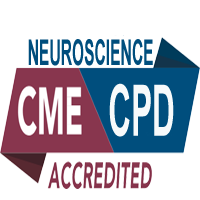
Gunel Zeynalova-Latifova
Azerbaijan Medical University, Azerbaijan
Title: Nonepileptic Paroxysmal disorders in children. Affective-Respiratory paroxysms in children
Biography
Biography: Gunel Zeynalova-Latifova
Abstract
Nonepileptic paroxysmal disorders in children and adolescents is a large group of diseases and syndromes, which are characterized by relatively sporadic loss of consciousness and/or diverse motor, emotional, psychological vegetative problems. In broad sense of the concept N.E.P.R. includes any suddenly appeared symptoms for which the term "epilepsy" is not suitable.
1. Syncopal states - syncope, fainting, collapse.
2. Non epileptic sleep disorders.
3. Disorders related to impairment in emotional spheres (panic attacks, bouts of hysteria)
4. Other childhood paroxysmal disorders (affective-respiratory paroxysms, fading (starring), grimace, trembling attacks, masturbation in young children, muscle spasms while chewing).
5. Extrapyramidal symptoms
6. Migraine.
7. Somatogen paroxysmal disorders.
8. Paroxysmal disorders with acute cerebral blood circulation with traumatic brain injury etc.
The ILAE 2001 8th section includes seizures, for which the definition of "epilepsy" is not always suitable. This group can also contain the following disorders:Benign neonatal seizure, Febrile seizures, Reflex seizures, Seizures associated with alcohol withdrawal, Seizures associated with taking different medicines etc.
Affective-respiratory paroxysms occur in young children in response to exogenous adverse impacts. The frequency of the disease in the pediatric population comprises 4-17% .Given that affective-respiratory paroxysms are accompanied by apnea and/or asystole and many authors consider them to be life endangered state. According to some data, affective-respiratory paroxysms amount for about 8% of such states.
The causes and mechanisms of the emergence of the disease.
Affective-respiratory paroxysms are initiating paroxysms. For the activation of the disease there must be the impact of some factors causing dissatisfaction, anger, fear or pain. Each child can have a special practical factor. As a result, there is a strong cry, where hyperventilation of lungs, hypocapnic ischemia of the brain and low blood pressure problems take place.
Weeping causes the spasm of the respiratory tract and as a result the mechanism Valsalva Weber is triggered, when due to the rise in thoracic pressure, venous return to the heart and cardiac output as well as minute volume of blood stream decrease, which leads to hypoperfusion of cerebral arteries and simultaneously to venous stasis. In combination with hypoxemia it results to the loss of consciousness and/or convulsions. This gives diffuse cyanosis of the skin, i.e. cyanotic affective-respiratory paroxysms.
Sometimes “pale” affective-respiratory paroxysms can take place, where the initiating agent is either pain or fear. It is short-term state, where asystole takes 10 seconds, sometimes 20 seconds. Thus, the main pathogenetic link in the affective-respiratory paroxysms is apnea or apnea + asystole.
It is clear that apnea does not have central origin, as respiratory efforts and the motion of respiratory muscles are observed in the absence of air stream in the upper respiratory tract. If a child has epi center or epi activity it can lead to the epi seizures.
Anemia may contribute to an increase in the degree of hypoxia.
Usually children with affective-respiratory paroxysms grow up either in socially unfavorable families or in "overprotection" conditions. But typically if it does not result in the epi, the intellectual and mental development is normal. The affective-respiratory paroxysms can last till 6 years old and it reaches its peak at the age of 6-18 months old. The frequency of several attacks per hour may account for 1 attack per month, but during intercurrent diseases it quickens.

